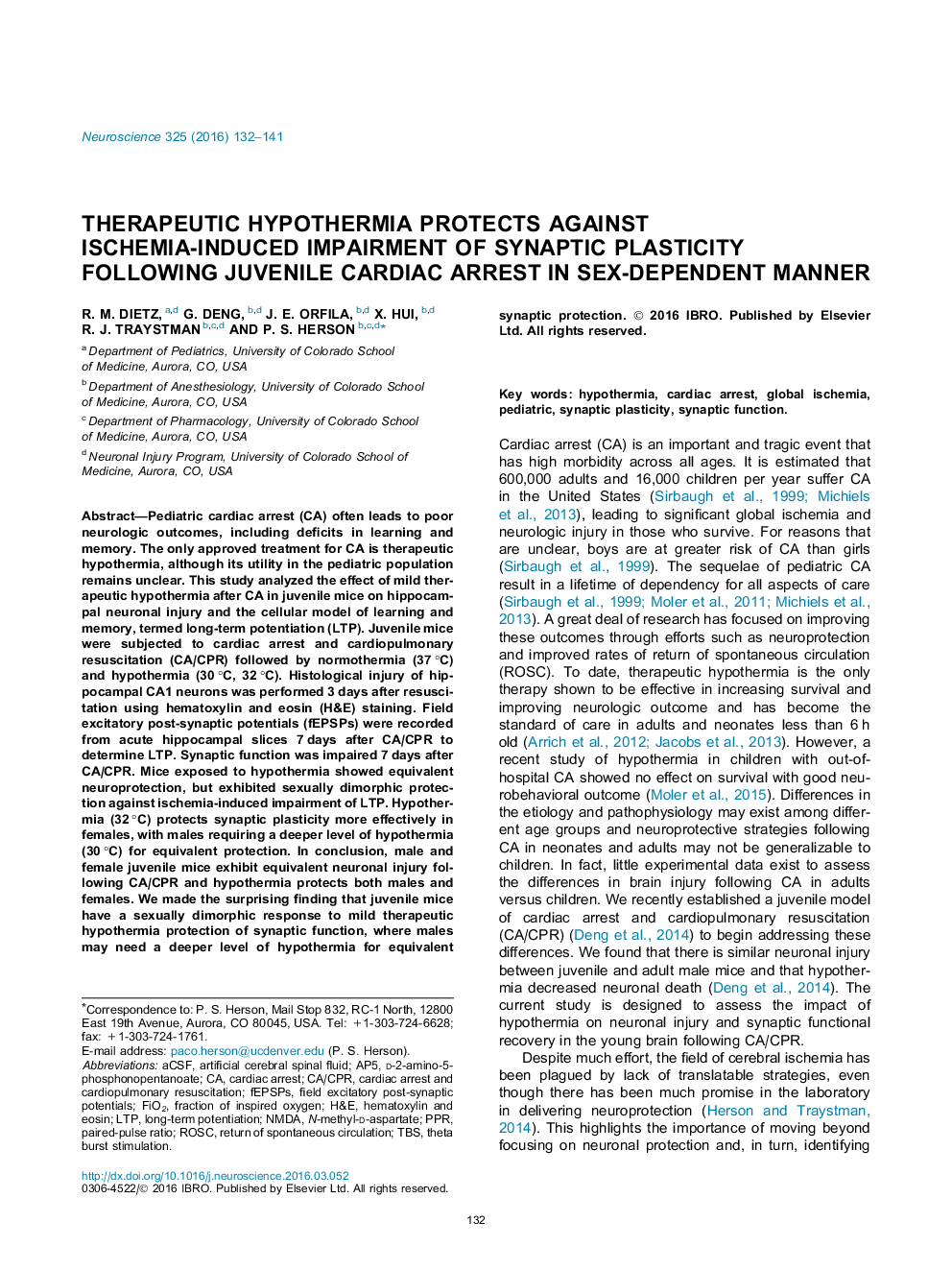| Article ID | Journal | Published Year | Pages | File Type |
|---|---|---|---|---|
| 4337362 | Neuroscience | 2016 | 10 Pages |
•Synaptic plasticity in juvenile mice is impaired 7 days after cardiac arrest.•Therapeutic hypothermia protects synaptic function when applied after cardiac arrest in juvenile mice.•There is a sexually dimorphic response to hypothermic functional protection in female juvenile mice compared to males.•The mechanism of synaptic impairment appears to be downstream of NMDA receptor functional changes after ischemia.
Pediatric cardiac arrest (CA) often leads to poor neurologic outcomes, including deficits in learning and memory. The only approved treatment for CA is therapeutic hypothermia, although its utility in the pediatric population remains unclear. This study analyzed the effect of mild therapeutic hypothermia after CA in juvenile mice on hippocampal neuronal injury and the cellular model of learning and memory, termed long-term potentiation (LTP). Juvenile mice were subjected to cardiac arrest and cardiopulmonary resuscitation (CA/CPR) followed by normothermia (37 °C) and hypothermia (30 °C, 32 °C). Histological injury of hippocampal CA1 neurons was performed 3 days after resuscitation using hematoxylin and eosin (H&E) staining. Field excitatory post-synaptic potentials (fEPSPs) were recorded from acute hippocampal slices 7 days after CA/CPR to determine LTP. Synaptic function was impaired 7 days after CA/CPR. Mice exposed to hypothermia showed equivalent neuroprotection, but exhibited sexually dimorphic protection against ischemia-induced impairment of LTP. Hypothermia (32 °C) protects synaptic plasticity more effectively in females, with males requiring a deeper level of hypothermia (30 °C) for equivalent protection. In conclusion, male and female juvenile mice exhibit equivalent neuronal injury following CA/CPR and hypothermia protects both males and females. We made the surprising finding that juvenile mice have a sexually dimorphic response to mild therapeutic hypothermia protection of synaptic function, where males may need a deeper level of hypothermia for equivalent synaptic protection.
